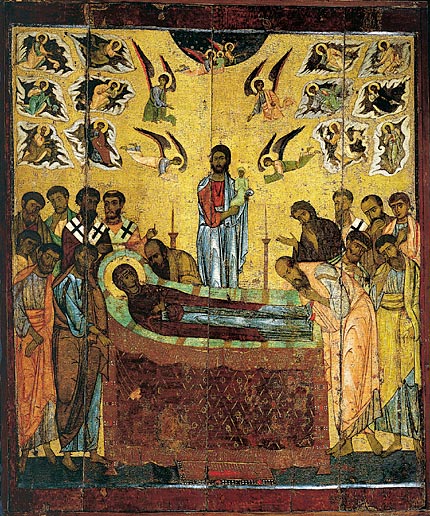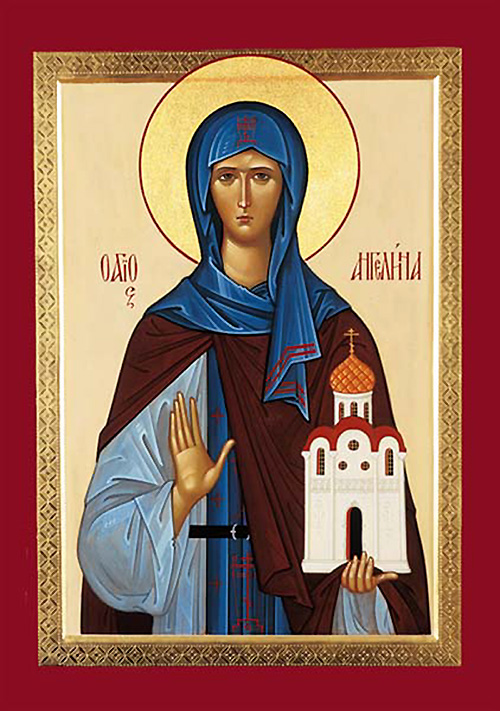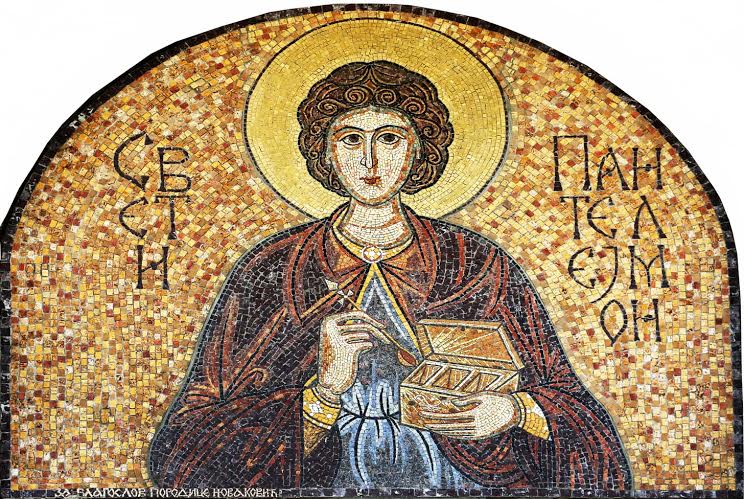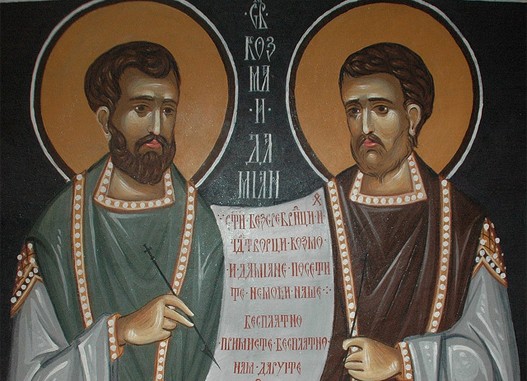Calendar
The Holy Transfiguration of our Lord God and Savior Jesus Christ
18. August 2015 - 10:12Discourse on the Holy Transfiguration of Our Lord God and Savior Jesus Christ of Saint Gregory Palamas, Archbishop of Thessalonica
For an explanation of the present Feast and understanding of its truth, it is necessary for us to turn to the very start of today’s reading from the Gospel: “Now after six days Jesus took Peter, James and John his brother, and led them up onto a high mountain by themselves” (Mt.17:1).
The Fast of the Dormition of the Holy Theotokos
17. August 2015 - 12:31 For the first fourteen days of August during each year, the Holy Orthodox Church enters into a strict fast period in honor of the Mother of God, the Virgin Mary. The eminent Orthodox theologian, Father Sergei Bulgakov, beautifully expresses the high regard which the Orthodox Christians have for the Blessed Virgin Mary, the Mother of God, for her special role in the salvation of mankind, when he affirms, “The warm veneration of the Theotokos is the soul of Orthodox Piety.” St. John of Damascus, one of the great Orthodox fathers, pointed out that when the Blessed Virgin Mary became the Mother of God and gave birth to Christ, the Redeemer of Mankind, she became the mother of mankind. We call the Virgin Mary “Theotokos”, from the Greek, which means “The Birth-Giver or the Bearer of God.” This is the highest title that can be bestowed upon any member of the human race.
For the first fourteen days of August during each year, the Holy Orthodox Church enters into a strict fast period in honor of the Mother of God, the Virgin Mary. The eminent Orthodox theologian, Father Sergei Bulgakov, beautifully expresses the high regard which the Orthodox Christians have for the Blessed Virgin Mary, the Mother of God, for her special role in the salvation of mankind, when he affirms, “The warm veneration of the Theotokos is the soul of Orthodox Piety.” St. John of Damascus, one of the great Orthodox fathers, pointed out that when the Blessed Virgin Mary became the Mother of God and gave birth to Christ, the Redeemer of Mankind, she became the mother of mankind. We call the Virgin Mary “Theotokos”, from the Greek, which means “The Birth-Giver or the Bearer of God.” This is the highest title that can be bestowed upon any member of the human race.
Translation of the relics of the Protomartyr and Archdeacon Stephen from Jerusalem to Constantinople
15. August 2015 - 12:38 The Transfer of the Relics of the Holy Protomartyr Stephen from Jerusalem to Constantinople took place about the year 428.
The Transfer of the Relics of the Holy Protomartyr Stephen from Jerusalem to Constantinople took place about the year 428.
After the holy Protomartyr Archdeacon Stephen was stoned by the Jews, they left his holy body unburied to be devoured by the beasts and birds. After a day and a night the renowned Jewish teacher of the Law, Gamaliel sent people to take up the body of the Protomartyr. Gamaliel buried him on his own property, in his own tomb, not far from Jerusalem.
When Lord’s secret disciple Nicodemus died, Gamaliel also buried him near the grave of St Stephen. Afterwards Gamaliel himself, who had been baptized with his son Abibas, was buried near the grave of the Protomartyr Stephen and St Nicodemus.
In the year 415 the relics of the saint were uncovered in a miraculous manner and solemnly transferred to Jerusalem by Bishop John and the bishops Eutonius of Sebaste and Eleutherius of Jericho. From that time healings took place from the relics.
Afterwards, during the reign of holy Emperor Theodosius the Younger (408-450), the relics of the holy Protomartyr Stephen were transferred from Jerusalem to Constantinople and placed in the church of the holy deacon Laurence (August 10). When a church dedicated to the Protomartyr Stephen was built, the relics were transferred there on August 2. St Stephen’s right hand is preserved in the Serapionov chamber of the Trinity-Sergius Lavra.
Saint Angelina of Serbia
12. August 2015 - 11:00 Saint Angelina was the daughter of Prince George Skenderbeg of Albania. Her mother’s name is not known, but she raised her daughter in Christian piety and taught her to love God.
Saint Angelina was the daughter of Prince George Skenderbeg of Albania. Her mother’s name is not known, but she raised her daughter in Christian piety and taught her to love God.
St Stephen Brancovich (October 9 and December 10), the ruler of Serbia, had come to Albania to escape those who wished to kill him. Some time before he arrived in Albania, St Stephen was unjustly blinded by the Turkish Sultan for some perceived offense. Since he was innocent, he bore his affliction with courage.
St Stephen was not only Prince George’s guest, but he was also treated as a member of his family. Not surprisingly, Stephen and Angelina eventually fell in love. With her parents’ blessing, they were married in church. After a few years, they were blessed with two sons: George and John.
Feast of the Great Martyr and Healer Saint Panteleimon
9. August 2015 - 10:20
This Saint, who had Nicomedia as his homeland, was the son of Eustorgius and Eubula. His father was an idolater, but his mother was a Christian from her ancestors. It was through her that he was instructed in piety, and still later, he was catechized in the Faith of Christ by Saint Hermolaus (see July 26) and baptized by him. Being proficient in the physician's vocation, he practiced it in a philanthropic manner, healing every illness more by the grace of Christ than by medicines. Thus, although his parents had named him Pantoleon ("in all things a lion"), because of the compassion he showed for the souls and bodies of all, he was worthily renamed Panteleimon, meaning "all-merciful."
The Holy Martyrs Cosmas and Damian
14. July 2015 - 9:02 Cosmas and Damian were unmercenary physicians and miracle-workers. These two saints were brothers, were born in Rome and as children were baptized and brought up in the Christian spirit. They possessed abundant grace from God to heal men and livestock from every disease and suffering, usually by the laying on of hands. They sought no reward for their efforts. They only required of the infirm to believe in Christ the Lord. Inheriting a large estate, they charitably distributed it to the needy and to those in want.
Cosmas and Damian were unmercenary physicians and miracle-workers. These two saints were brothers, were born in Rome and as children were baptized and brought up in the Christian spirit. They possessed abundant grace from God to heal men and livestock from every disease and suffering, usually by the laying on of hands. They sought no reward for their efforts. They only required of the infirm to believe in Christ the Lord. Inheriting a large estate, they charitably distributed it to the needy and to those in want.


